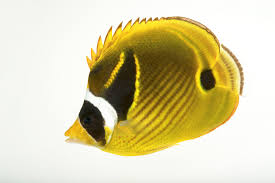
The dragon, a central figure in Chinese culture and mythology, has long been associated with prosperity, success, and the flourishing of civilizations. For centuries, this mythical creature has not only been a symbol of power and strength but has also played an integral role in Chinese literature, where it often signifies the dynamic forces of growth, abundance, and the unfolding of prosperity. From ancient dynastic histories to more modern literary works, the dragon continues to embody the ideals of progress and the hope for a prosperous future.
In this article, we will explore the representation of the dragon in Chinese literature, particularly in works that celebrate prosperity and development. We will examine its symbolic significance, the themes it represents, and how it connects with the broader cultural and historical contexts of China. By tracing the dragon’s presence in various literary forms, including mythological stories, classical poems, historical accounts, and modern narratives, we will better understand how the dragon has shaped and continues to influence Chinese literary traditions.
1. The Dragon as a Symbol of Prosperity in Ancient Chinese Mythology
In ancient Chinese mythology, the dragon is often depicted as a powerful and benevolent creature that brings prosperity and abundance. The dragon is closely tied to the forces of nature, governing elements like water, rain, and wind, which were essential for agricultural prosperity in ancient China. The mythological tales involving dragons reflect the belief that the creature had the ability to ensure the fertility of the land and the success of crops, which in turn ensured the prosperity of the nation.
The Yellow Emperor and the Dragon
One of the most iconic representations of the dragon in Chinese mythology is its connection to the legendary Yellow Emperor (黄帝, Huángdì), considered one of the earliest rulers of China. The Yellow Emperor, a figure of both historical and mythological importance, is often depicted as being guided by a dragon, symbolizing his connection to the heavens and his authority over the earth.
According to the myth, the Yellow Emperor ascended to the throne with the assistance of the dragon, who guided him through turbulent times and helped him establish peace and prosperity. The dragon, in this case, is not only a symbol of power but also a protector and a divine force that fosters growth and stability. This myth embodies the belief that a wise and just ruler, like the Yellow Emperor, could bring prosperity to the people with the aid of celestial forces, including the dragon.
The Dragon and the Floods
Another significant myth in which the dragon plays a central role is the story of Yu the Great (大禹, Dà Yǔ) and the control of floods. Yu, a hero in Chinese mythology, is credited with taming the floods that ravaged the land, using his ingenuity and perseverance to divert rivers and prevent disasters. In the myth, dragons are often seen as both causing and controlling the floods. They represent the immense power of nature, capable of bringing destruction or, when controlled, ensuring the prosperity of the land. The story of Yu and the dragon reflects the delicate balance between harnessing natural forces for the benefit of the people and ensuring the survival and growth of the civilization.
The dragon’s role in these ancient myths emphasizes its dual nature—its power to both create and destroy, and its potential to bring abundance and development when controlled and revered properly. This duality makes the dragon a complex symbol of prosperity, one that requires respect, understanding, and stewardship.
2. Dragons in Classical Chinese Poetry: A Metaphor for Growth and Success
The dragon’s symbolic presence in Chinese literature is not limited to mythological stories but also extends to classical Chinese poetry. In traditional poems, the dragon often appears as a metaphor for the potential for personal and national growth, success, and the flourishing of the state.
The Dragon as a Symbol of Imperial Power and Prosperity
In imperial China, poetry was often a means by which rulers expressed their vision for prosperity and national development. The dragon frequently appeared in poetry to symbolize the emperor’s role as the earthly representative of the dragon, and by extension, the forces of growth and prosperity. A famous example can be found in poems written during the Tang Dynasty (618–907), which celebrated the prosperity of the empire and the emperor’s connection to the dragon. The Tang Dynasty was a period of cultural flourishing, economic prosperity, and military strength, and poets often invoked the dragon as a symbol of these achievements.
One famous poem from the Tang period, titled “The Dragon’s Embrace,” is an allegory of the emperor’s role in nurturing the empire’s growth and ensuring its continued prosperity. The poem speaks of the dragon encircling the nation, protecting it from external threats, and blessing it with the abundance of nature. The dragon, as described in the poem, represents not only the emperor’s divine authority but also the promise of stability, wealth, and peace for the people.
The Dragon and Nature in the Song Dynasty
The Song Dynasty (960–1279) also saw the dragon appear frequently in poetry, often in connection with nature and the cycles of the seasons. Poets during this time, such as Su Shi (苏轼), used the dragon to symbolize the regenerative forces of nature, as well as the cycle of growth and decay that defines prosperity. In his famous poem “The Dragon’s Song,” Su Shi speaks of the dragon soaring in the skies, bringing rain and nurturing the earth. The dragon’s presence is depicted as a harbinger of seasonal change and abundance, ensuring the prosperity of both the natural world and human society.
In this context, the dragon is a symbol of harmony between the heavens and earth, where the proper balance of natural forces leads to the flourishing of crops, the prosperity of the people, and the continued growth of the empire. The dragon’s association with nature and the earth highlights its role as a guardian of the environment and a symbol of sustainable development.
3. The Dragon and the Theme of Prosperity in Historical Literature
Beyond mythology and poetry, the dragon is also a prominent figure in historical literature. In ancient Chinese histories and records, the dragon often symbolizes the prosperity and strength of the empire, reflecting the growth of China under wise and capable rulers.
The Records of the Grand Historian (Shi Ji)
In the monumental historical work “Records of the Grand Historian” (史记, Shǐjì), written by the historian Sima Qian during the Han Dynasty, the dragon is frequently invoked as a symbol of imperial authority and the prosperity that comes with wise governance. The work chronicles the histories of China’s legendary emperors, many of whom are associated with dragon imagery. The emperors are often described as being “in the image of the dragon,” suggesting that their rule, like the dragon, is divine and capable of ensuring the nation’s prosperity.
The dragon’s presence in these historical texts serves as a reminder that prosperity is not simply a product of material wealth or military conquest but is also deeply connected to virtuous leadership. Just as the dragon is seen as a celestial being that brings rain and abundance, a wise emperor is seen as a ruler who fosters harmony, growth, and prosperity for his people.
The Development of the Silk Road
In historical narratives about the Silk Road, the dragon is often mentioned as a symbol of the flourishing trade routes and cultural exchange that brought wealth and prosperity to China. The Silk Road was a network of trade routes that connected China with Central Asia, the Middle East, and Europe, allowing for the exchange of goods, ideas, and technologies. In these historical texts, the dragon represents the dynamic forces of economic development, connecting China with the rest of the world and facilitating the exchange that led to the nation’s prosperity.
The dragon’s association with the Silk Road reflects the idea that prosperity is not a static achievement but an ongoing process of growth, exchange, and innovation. Just as the dragon moves fluidly through the sky and water, so too does the prosperity of China evolve through trade, diplomacy, and cultural exchange.
4. The Dragon in Modern Chinese Literature: A Symbol of Transformation and Growth
In modern Chinese literature, the dragon continues to symbolize prosperity, but it is also increasingly associated with transformation and progress. As China has experienced rapid modernization and economic growth in the 20th and 21st centuries, the dragon has taken on new meanings, reflecting the nation’s journey toward development and global prominence.
Contemporary Literature and the Dragon
In contemporary Chinese literature, authors often use the dragon as a metaphor for China’s rise as a global power. The dragon is portrayed as a symbol of national pride, economic prosperity, and the potential for future growth. In novels, short stories, and essays, the dragon represents the challenges and opportunities that come with modernization, as well as the complexities of balancing tradition with innovation.
The dragon’s enduring presence in Chinese literature, from ancient mythologies to modern narratives, reflects the ongoing journey of the Chinese people—a journey that is deeply intertwined with the themes of prosperity, growth, and development. As China continues to evolve, the dragon remains a powerful and enduring symbol of the nation’s ambition, resilience, and potential for a bright future.
5. Conclusion: The Dragon’s Legacy in Chinese Literature
Throughout Chinese literature, the dragon has served as a symbol of prosperity and development, from its mythological associations with divine power and natural forces to its portrayal as a protector and guarantor of the nation’s growth. Whether in ancient myths, classical poetry, historical accounts, or modern works, the dragon continues to embody the ideals of success, progress, and transformation.
As China continues to evolve and prosper, the dragon remains a central figure in the cultural consciousness, representing both the achievements of the past and the possibilities for the future. The dragon, as a symbol of prosperity and development, will undoubtedly continue to play a key role in Chinese literature for generations to come, inspiring new stories of growth, transformation, and success.










